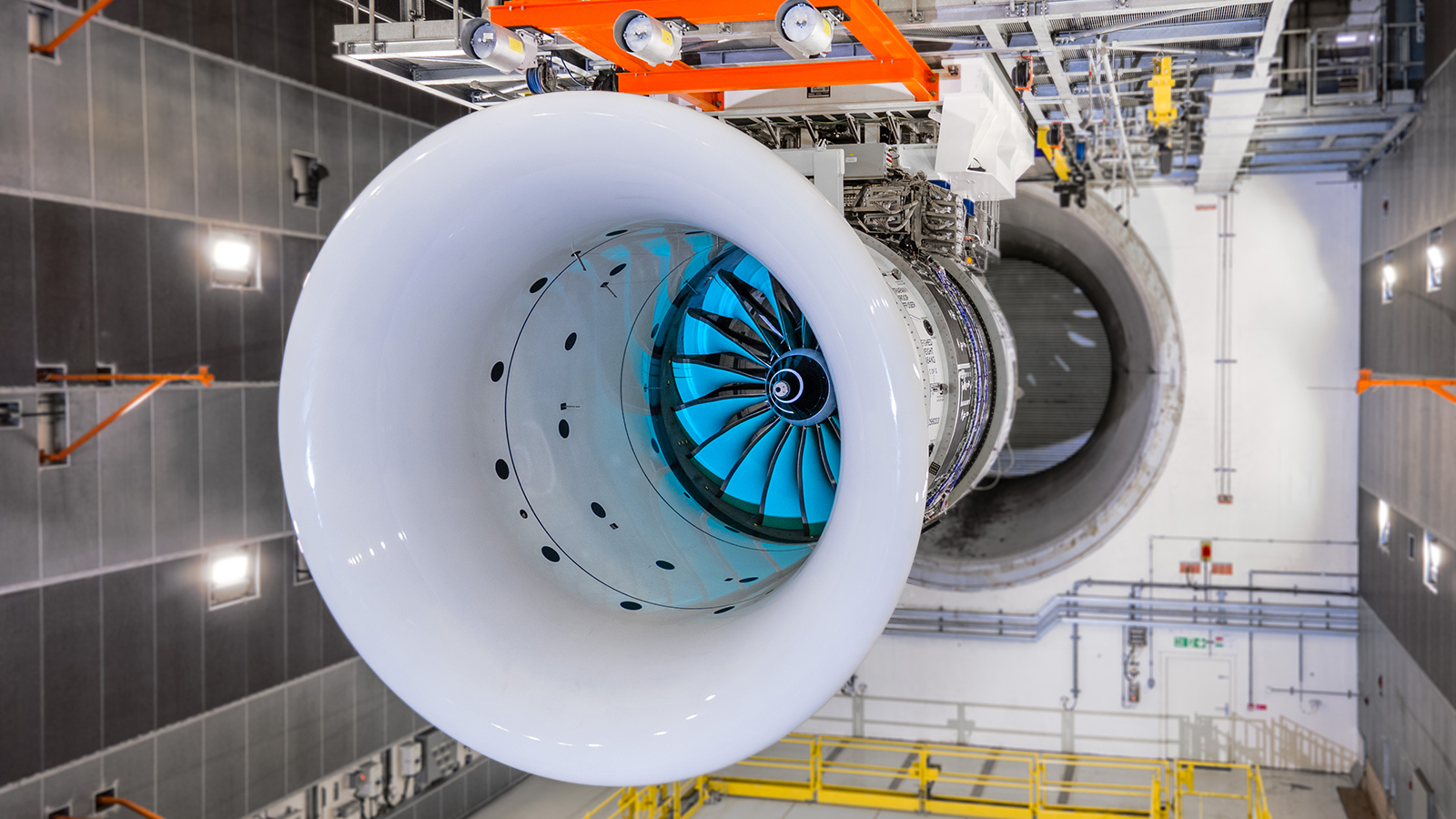Stay Up to Date
Submit your email address to receive the latest industry and Aerospace America news.
The Gas Turbine Engines Technical Committee works to advance the science and technology of aircraft gas turbine engines and engine components.
Pratt and Whitney of Connecticut in January announced that its family of Geared Turbofan engines has saved over a billion gallons of fuel and reduced carbon emissions by 10 million metric tons since their introduction in 2016. The geared fan enables the rotating turbomachinery to operate more efficiently at different speeds, reducing fuel burn and noise. Pratt and Whitney has continued testing the operation of the GTF engines on sustainable aviation fuel. The GTF engines produce up to 151 kilonewtons (34,000 pounds of force) of thrust and power aircraft including the Airbus A320neo.
In February, Pratt and Whitney Canada, headquartered in Quebec, reached a billion flight hours over its 95-year history. In a press release, the company said it has produced “more than 110,000 engines” across a range of aircraft markets. The PT6 turboprop and turboshaft engine family accounted for 500 million of the flight hours, with upwards of 64,000 engines produced in its 60-year history.
Rolls-Royce of the U.K. announced in May that it tested its UltraFan engine demonstrator with 100% sustainable aviation fuel in its Derby, U.K., test facility. The UltraFan engine features the largest fan in the industry at 3.56 meters (140 inches), with a geared design unique to this size of engine and tested scalable technologies for 111-490 kilonewtons (25,000-110,000 pounds of force) thrust engines. The design is Rolls-Royce’s first new engine architecture in 54 years, and the company says the geared fan design is scalable to a range of architectures for narrow and widebody aircraft. Rolls is targeting a 10% efficiency improvement over its Trent XWB engines.
GE Aerospace of Ohio announced in June that it was evaluating open-fan engine concepts with the U.S. Department of Energy’s Frontier supercomputer at Oak Ridge National Laboratory in Tennessee. GE’s simulation of air flow and acoustics associated with the full-scale open-fan design required new computational fluid dynamics software capable of executing on the world’s fastest supercomputer, a Cray EX-based system capable of 1.6 exaflops (1.6×1018 floating-point operations per second). Application of advanced and large-scale computing in the design process offered unprecedented levels of physics detail and will be instrumental in meeting industry goals for net-zero carbon emissions by 2050. The open-fan engine architecture increases efficiency by removing the nacelle. CFM International is also studying this configuration under its Revolutionary Innovation for Sustainable Engines, RISE, program, and plans call for ground and flight tests in the mid-2020s. The goal is to reduce carbon dioxide emissions by 20% compared to today’s engines. CFM International, a joint venture of GE Aerospace and Safran Aircraft Engines of France, produces CFM56 engines as well as Leading Edge Aviation Propulsion engines, which reached 25 million flight hours late last year.
In August, GE Aerospace announced that its GEnx family of engines reached 50 million flight hours since its introduction in 2011. GEnx variants power the Boeing 787 Dreamliner and 747-8.
In June, Pratt and Whitney and Virginia Tech announced a partnership to test a laser-based measurement method for thrust and emissions on a static engine test. The Filtered Rayleigh Scattering for Thrust technique measures velocity, temperature and density via nonintrusive lasers and cameras rather than sensors and probes. The technique captures the interaction of light and particles in the exhaust gases of an engine to simultaneously quantify multiple parameters. The laser-based FRST measurements are less intrusive in space-limited applications and are cost-effective for development of more efficient gas turbine engines with fewer pollutants.
Stay Up to Date
Submit your email address to receive the latest industry and Aerospace America news.




